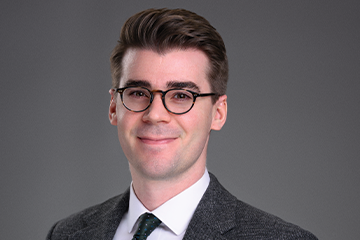
Professor Ben Sundholm’s recently presented his forthcoming paper, The Tort Law We Need, at multiple venues.
On April 4th, the paper was workshopped at the Fourth Annual Cybersecurity Law & Policy Scholars Conference at the Ohio State University Moritz College of Law. The paper was also workshopped on April 18th at the Private Law and Emerging Technology Workshop, sponsored by the Harvard Law School Project on the Foundations of Private Law, the Yale Law School Information Society Project, and the Yale Law School Center for Private Law. On April 26th, Sundholm presented his paper at the Inaugural AI Safety Law Roundtable at the University of Alabama Law School.
In the paper, Professor Sundholm explores the private law reforms that developed in response to the challenges posed by new technologies that emerged during the Industrial Revolution. His paper draws on these historical examples to propose doctrinal revisions that are necessitated by the ways in which modern technologies are straining existing tort law. Here is the abstract:
Abstract
Today, artificial intelligence-based technologies—from ChatGPT and the Internet of Things to self-driving cars and medical diagnostic tools—are increasing the number harms that are not caused by negligent conduct. Because the fault standard is the fundamental principle of modern tort law, victims of non-negligently caused harms often cannot receive redress for their injuries. In response, this article makes a historical and conceptual case for expanding strict liability doctrines in tort law.
As a historical matter, the doctrinal reforms implemented in response to the Industrial Revolution provide strong precedent for expanding strict liability today. At that time, various new technologies—from railroads and factory machinery to mass produced goods and infrastructure—caused a dramatic rise in the number of injuries that were not caused by negligent conduct. In response, a version of strict liability known as enterprise liability emerged. Enterprise liability holds entities responsible for accidents they cause, regardless of whether they acted negligently. Though less recognized today, enterprise liability remains an integral—albeit narrowly circumscribed—feature of tort law, particularly in product liability cases. Given the challenges posed by contemporary artificial intelligence-based technologies, we should revisit and expand enterprise liability today.
Conceptually, tort law is elastic and capable of expanding strict liability doctrines in response to socioeconomic changes. The article substantiates this claim by critically engaging with the most prominent contemporary tort theorists, who favor economic or philosophical views that either minimize or entirely exclude strict liability from the field. Contra economists, tort law’s aim is not, or not only, the efficient deterrence of risks. It also aims to efficiently ensure justice, prevent wrongs, and compensate victims. Given today’s challenges, enterprise liability achieves these goals better than the fault principle. Philosophers, meanwhile, mistakenly insist that strict liability imposes legal accountability without a wrong and, therefore, is not a legitimate part of tort law. I claim that strict liability does concern a wrong, albeit one of a particular type: a conditional wrong. It is wrong to benefit from certain activities and not assume responsibility for harms that follow, even when such harms are not the result of negligence.
